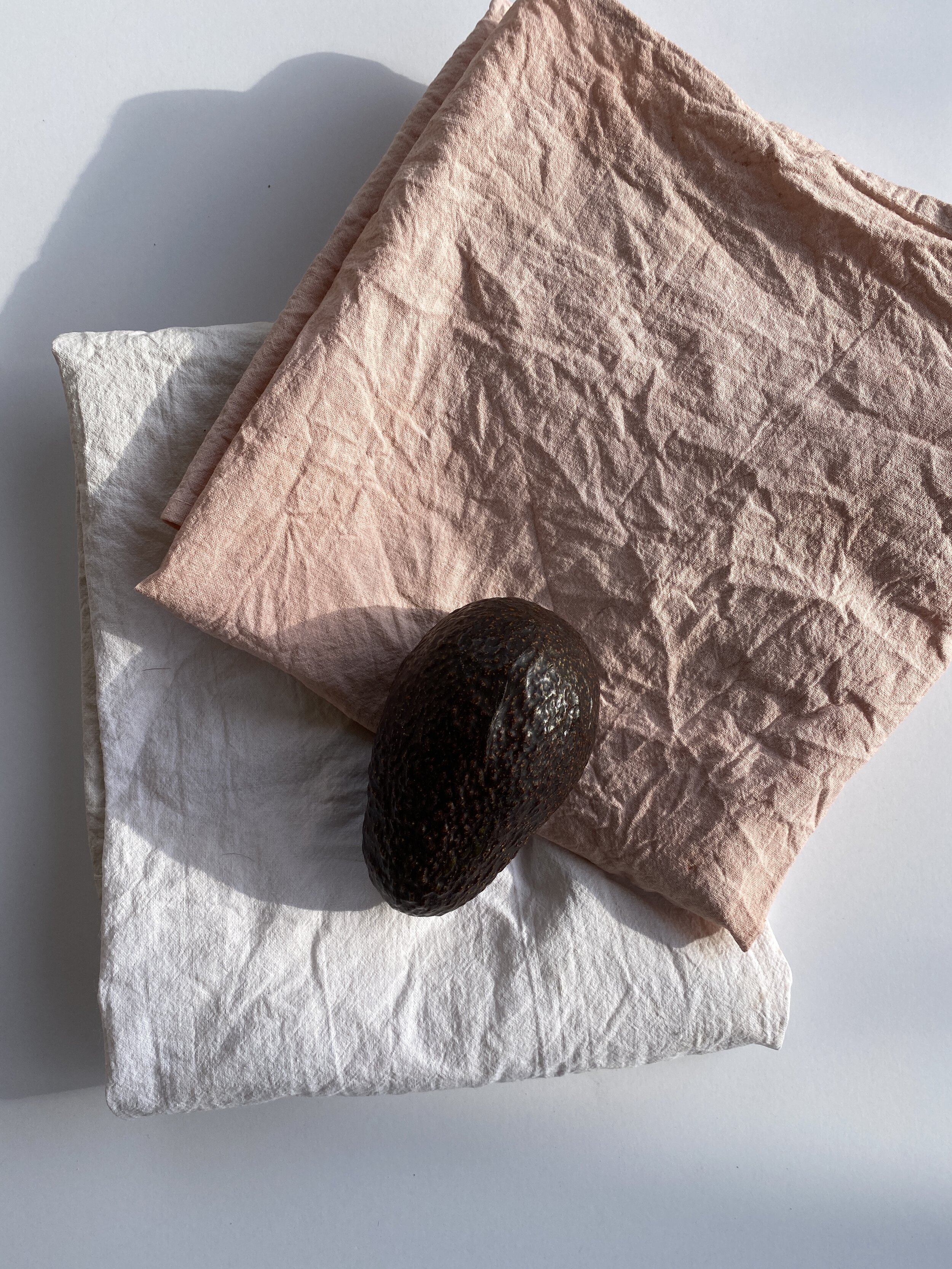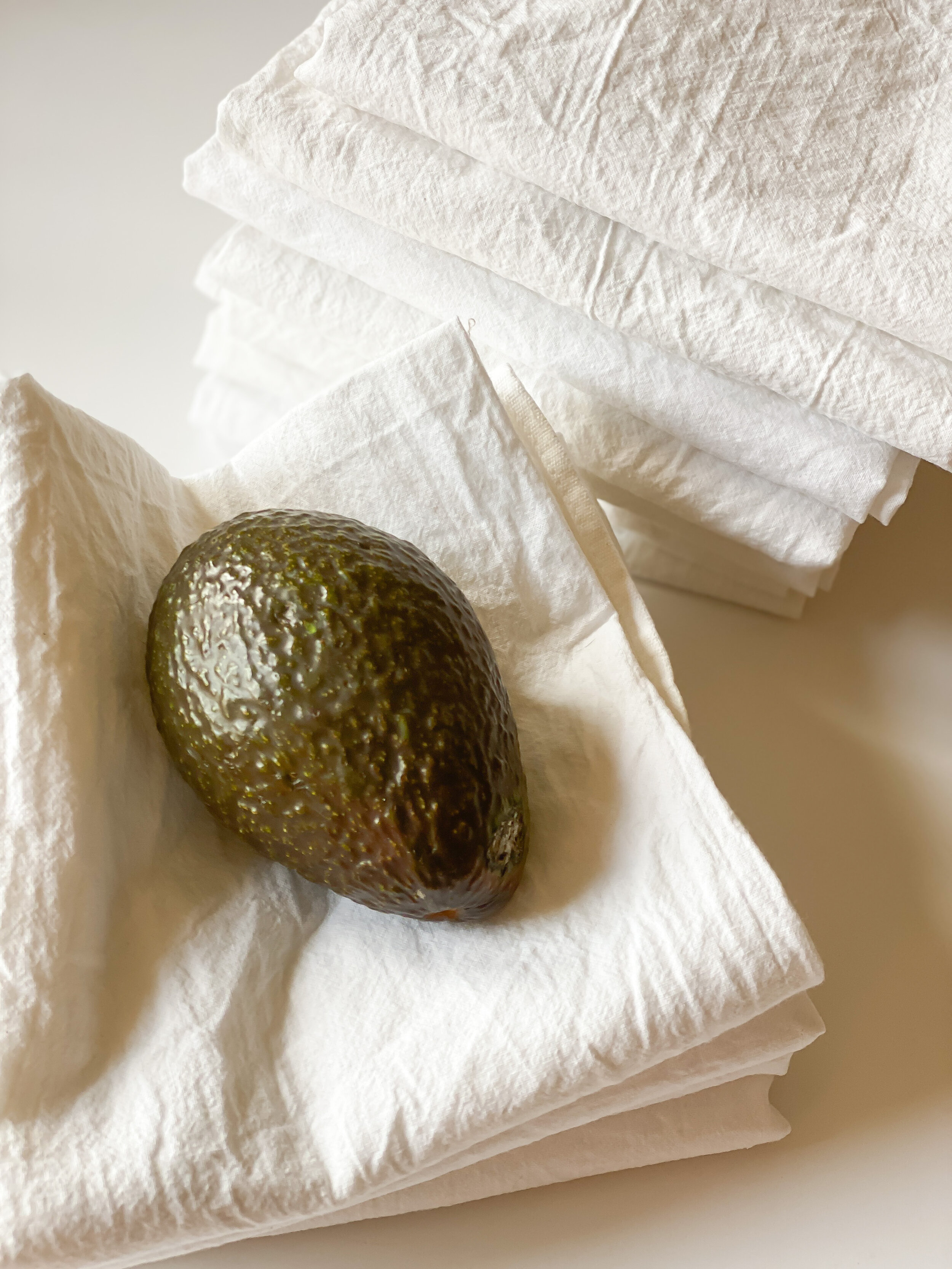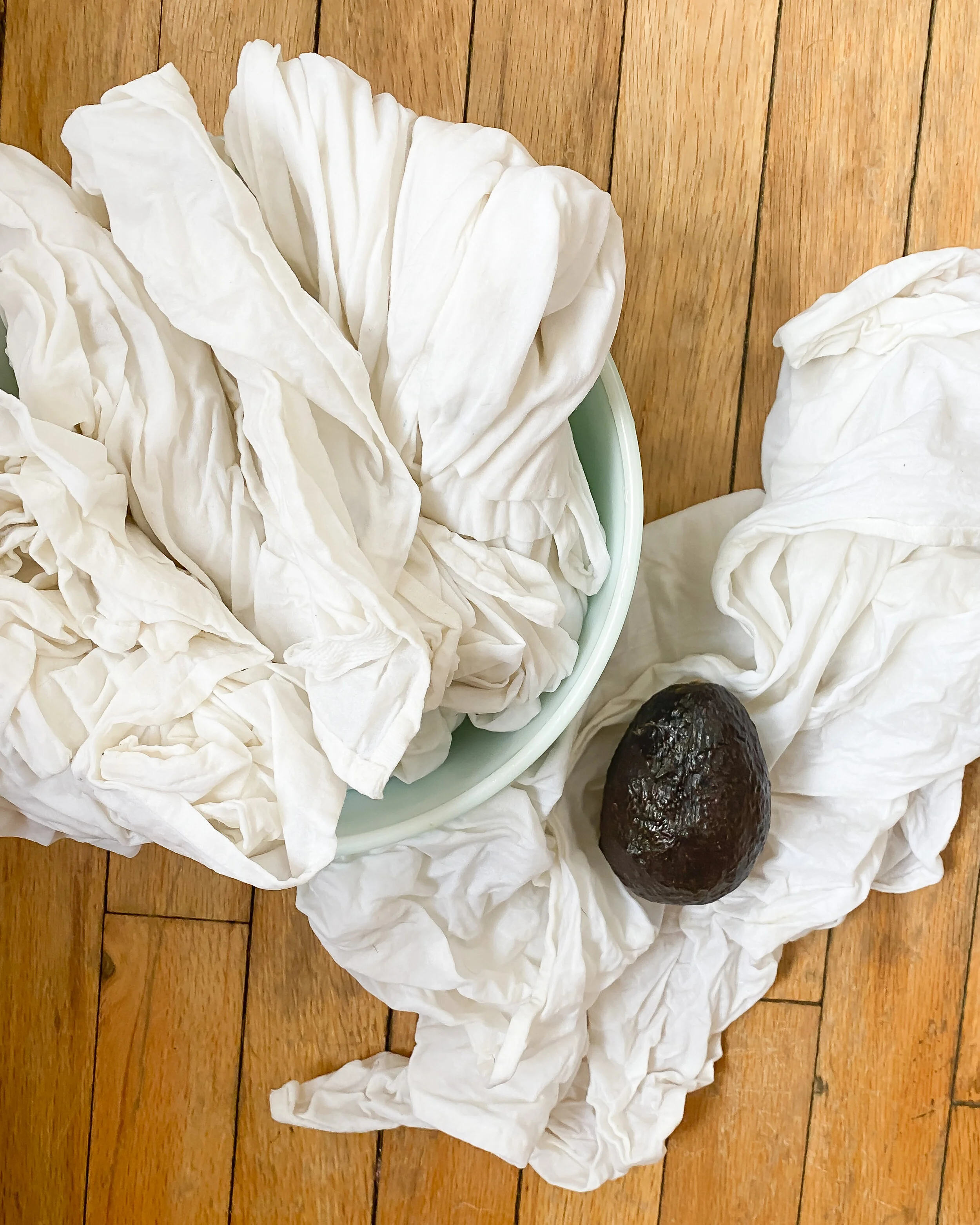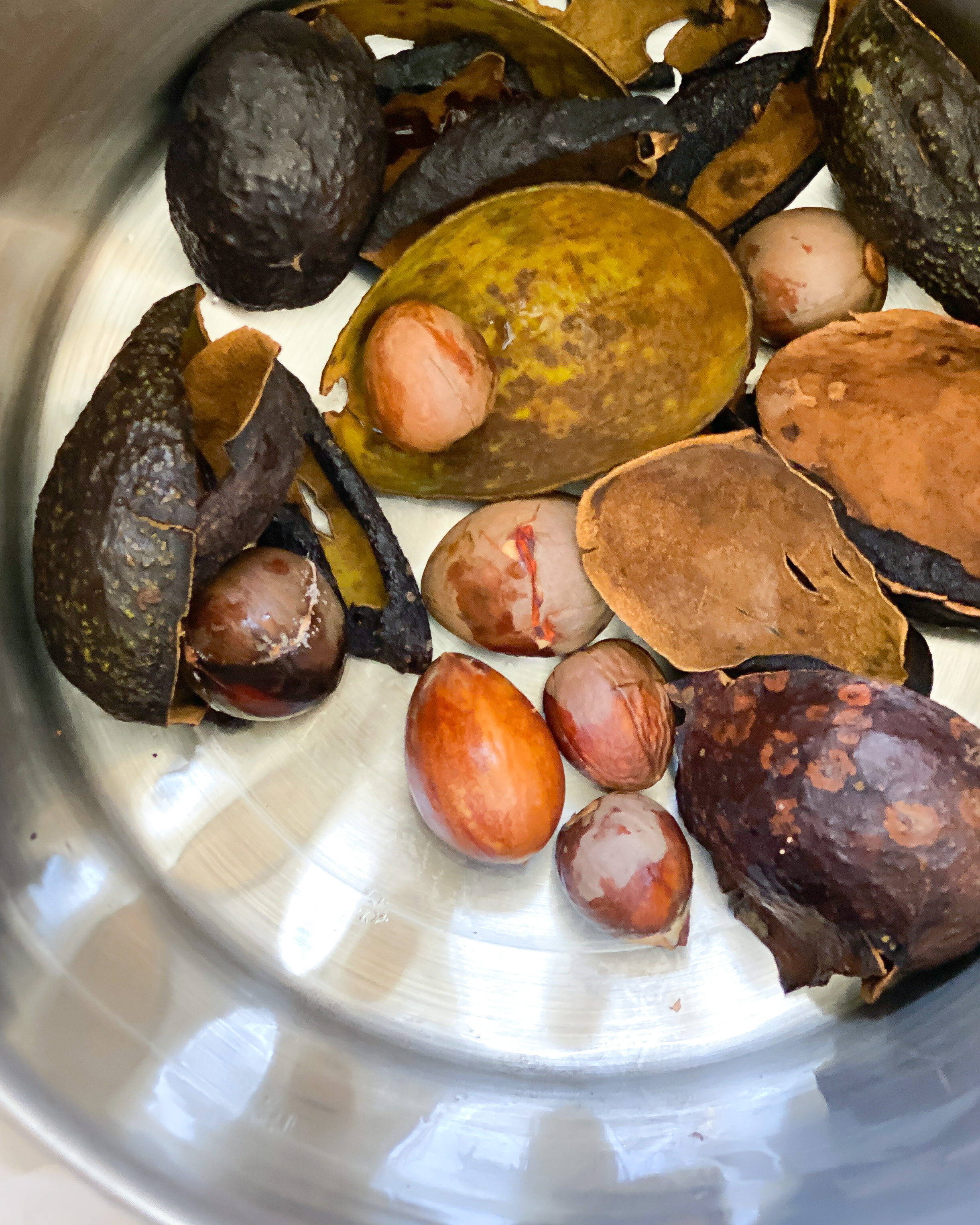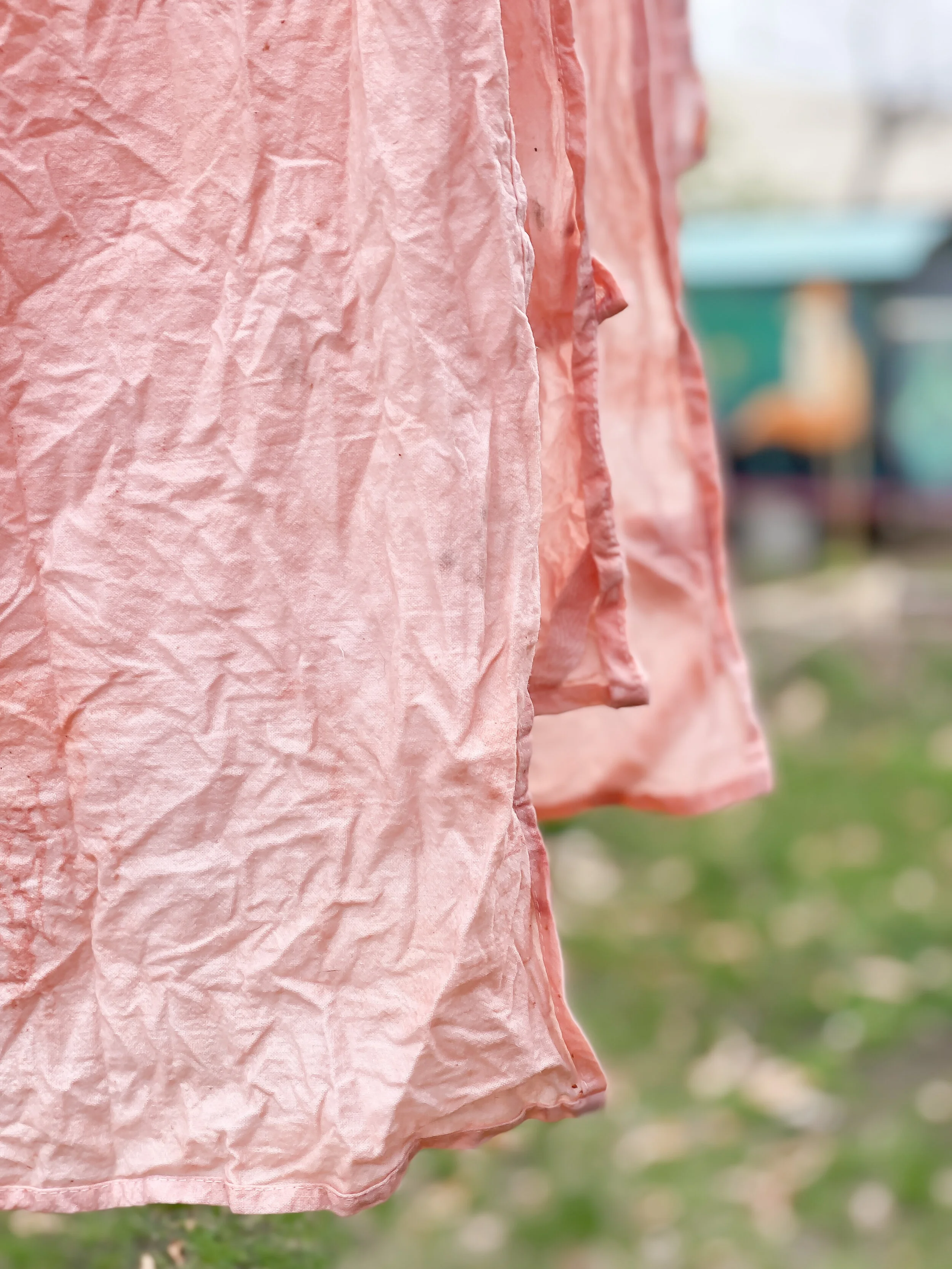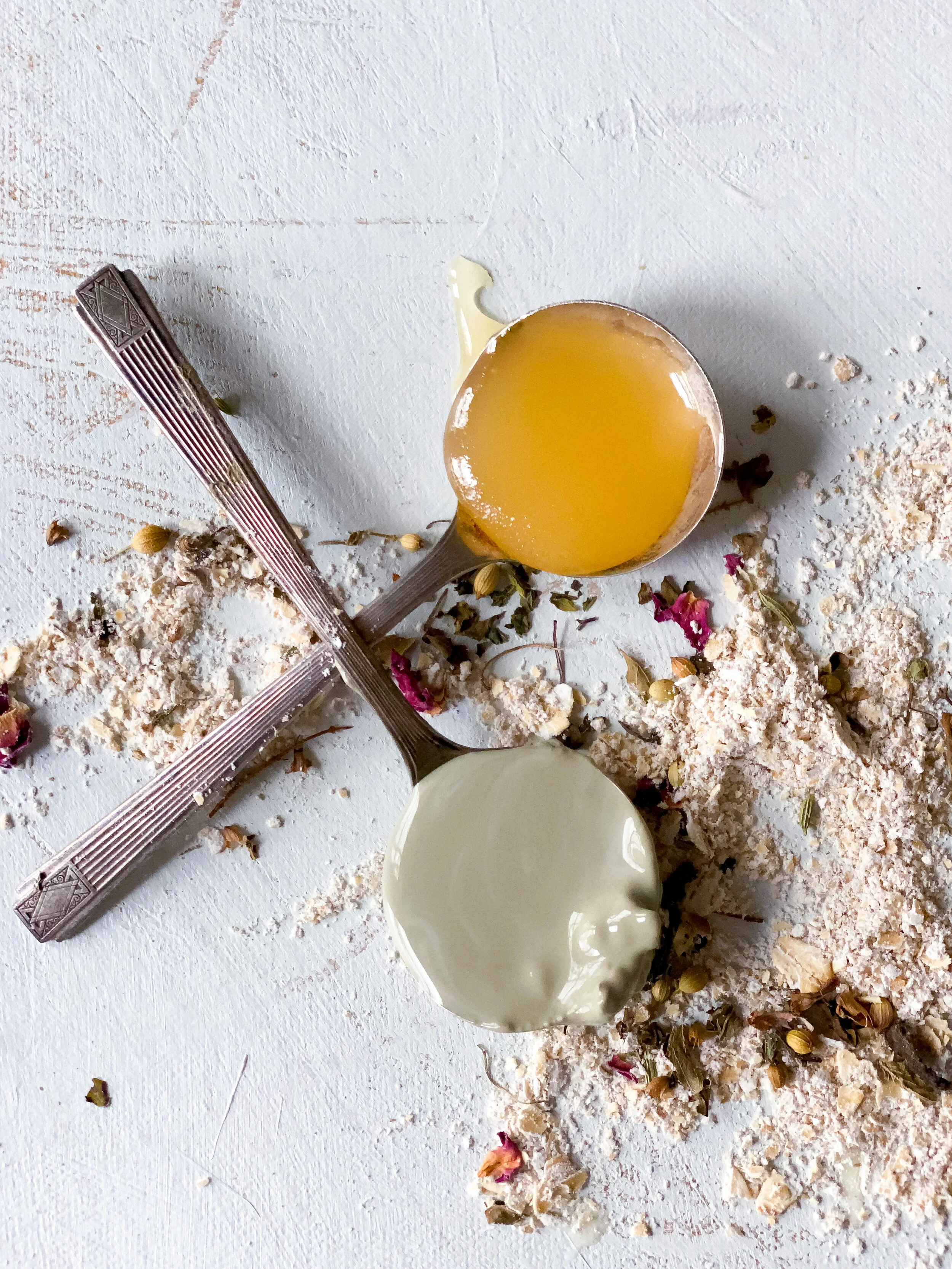Avocado Dying
Using avocado pits and peels is an easy weekend dye project for the craft-curious and experienced crafters.
This was such a satisfying project! I got all the guacamole, avocado toast and salad topping I could possibly want for a week AND I made this beautiful soft pink fabric that I love -
Avodcao dying cotton fabric takes some planning, but isn’t hard, making it a great weekend project for the craft-curious and the seasoned crafter.
Though I fall into the seasoned crafter category, I am no fiber-dyeing expert - I’m going to lay out a few basics and share some resources for supplies and learning.
Yes, you can throw your fabric in the dye-pot and just take what comes. But a little preparation will yield better results, and the dye will actually stick to the fabric instead of coming off with exposure to water and sunlight.
These directions are for cotton specifically. Animal fibers, such as silk or wool may need different pre-treatments in order to get good results - and synthetic fibers are outside my scope of experience.
What do I mean by “Pre-Treatments”?
Pre- treating the fabric will encourage the molecules that make the dye, making for more vibrant, predictable and permanent color. Seasoned natural dyers can manipulate the outcome by using a variety of pre-treatments.
Mordants are a way to pre-treat fabric that will affect the outcome. For example, the fabric that I did ‘mordant’ came out soft shades of pink-salmon. The fabric I forgot to treat came out terra cotta. Both were pretty, but the pink is what I wanted.
Some mordants are caustic and unpleasant to use - especially in the commercial dyeing industry. We aren’t going to touch those!
Supplies
Fabric - washed and double rinsed — you do NOT have to buy new. You can raid your linen cupboard, the stash of fancy napkins you got from Gramma but don’t know what else do do with, tired dish towels or a trip to the thrift store (I bought napkins from Dharma Trading).
The Dharma Trading tea towels make great gifts, easy sew projects for bulk bags, bandanas, and furoshiki gift wrap.
Avocado Pits and Peels
You can use just pits (that’s supposed to make a pinker dye)
Prep: as you eat the avocados, wash the pits and peels really well (the green flesh of the fruit will dull your color)
Store the pits and peels on the counter (for a few days) or in the freezer until you collect enough for the the pot
How many? At least 5 for a small pot of napkins/pillow cases
I used 9 pits and peels and got lovely soft pink-salmon color
Soy Milk - non-flavored, unsweetened - this is the mordant - you need enough to cover your fabric a smidge
Amonia - (optional) just a splash - I did use this. Yucky smells are yucky to me, but not bothersome. It did make the dye pot smell a little bit like a zoo building.
Prep - It takes 24-36 hours to prep the fabric and dye pot
The dye pot This part isn't instant. Once you put your avocado bits into the dye pot, add water (visualize the amount that will cover your fabric). Bring to a soft boil and turn off the heat. Let sit - maybe in a safe spot outside for 24 - 36 hours. Its fun to check on from time to time to see the color come out of the plant material.
There are actually ways you can make this dye similar to sun tea, but this is easy and effective
Wash the fabric. Bleach if necessary (might be good if you’re doing pillow cases or dish towels). Rinse twice.
You don’t NEED a cleansing agent called Synthrapol, but it is a good prep and post wash that will set the dye and help keep it colorfast and off your other fabrics
Soak the fabric in the soy milk at least 24 hours. It helps to dampen the fabric before stuffing into the pot. It is a good idea to use a pot that you’re not using for cooking (another good thing to pick up at the thrift store). Mine has been used for lots of dye projects, soap making and paper making through the years.
I did do a dip the first day of the dye pot and it was really disappointing. So I let the pot sit and the color got richer as time passed - this is the color day two and I got really pretty pinks.
Dyeing
Put damp fabric into the pot and leave it for hours and hours - keep coming back to check the color and decide if its ready to dry? Keep in mind a little of the color will come out during the rinsing and washing, so you might want to aim for a little darker at this time.
Finally
Rinse until the water runs clear. Wash in soapy water (or follow the synthrapol directions). Dry - - and DONE!
Do continue to wash separately if you don’t use the synthrapol.
Freshly dyed cotton on the line at Onethridacre
If you do the project, tag me? @alchemy.slowliving on Instagram? I'd love to see the results!
When you start searching the web, you’ll find a LOT of information out there - it’s not terribly contradictory, it’s just a lot to sort through: here are some sources I used and found helpful.
Dyeing with Natural Dyes: Avocado
Soy Milk Mordant (I only did mine 24 hours, but here is some additional help from a pro)

